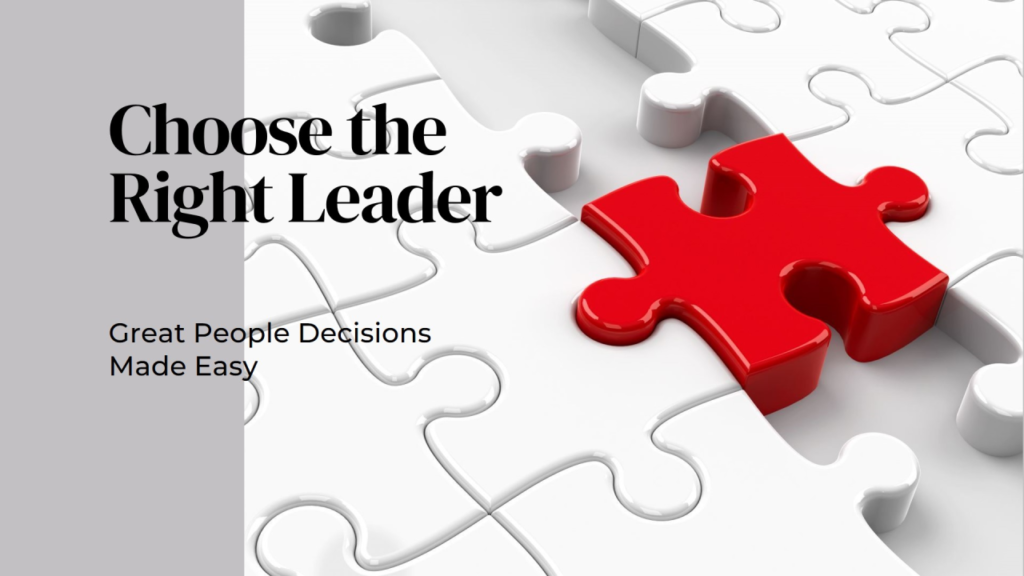Great People Decisions: Leadership Selection, Best Fit, Stretched Fit, and Best Bet

In my 32 years of career in HR and business leadership, one of the most important lessons I’ve learned and enabled organizations to achieve is the hiring of the right talent and leaders. The definition of talent and leaders in the context of hiring, promotion, and succession planning is not a simple one. We need to adopt more pragmatic and scientific thinking in these people decisions.
1. Best Fit:
Selecting a leader who is the best fit involves choosing someone whose skills, experience, and personality align closely with the current needs of the organization. This approach emphasizes compatibility and immediate effectiveness.
Key Characteristics:
- Alignment with Organizational Culture: The leader shares the same values and can seamlessly integrate into the company’s culture.
- Relevant Experience: The leader has a proven track record in similar roles or industries, ensuring they can handle the job with minimal adjustment.
- Immediate Impact: The leader can quickly contribute to achieving organizational goals due to their familiarity with the required skills and knowledge. Advantages:
- Smooth Transition: Minimal disruption during the onboarding process.
- Reduced Risk: Lower chances of failure since the leader’s abilities match the role’s requirements.
- Quick Wins: Immediate contributions to projects and initiatives.
2. Stretched Fit:
A stretched fit involves selecting a leader who may not have all the ideal qualifications but shows potential to grow into the role. This approach focuses on long-term development and the leader’s ability to adapt and expand their capabilities.
Key Characteristics:
- Growth Potential: The leader possesses the foundational skills and mindset to develop further.
- Learning Agility: Demonstrates the ability to quickly learn and apply new knowledge.
- Motivation and Drive: Highly motivated to take on challenges and grow within the organization. Advantages:
- Future Leadership: Prepares leaders for bigger roles in the future, fostering internal growth.
- Innovative Perspectives: Brings fresh ideas and approaches, potentially driving innovation.
- Increased Loyalty: Leaders who are given growth opportunities may show greater commitment to the organization.
3. Best Bet:
Choosing a leader based on the best bet involves taking a calculated risk on someone who shows exceptional promise, even if they lack conventional qualifications. This approach is about visionary leadership and potential for high reward.
Key Characteristics:
- Visionary Thinking: Possesses a forward-thinking mindset and can envision the future direction of the organization.
- Entrepreneurial Spirit: Shows initiative and the ability to take risks, driving the organization towards new opportunities.
- Charismatic Leadership: Can inspire and motivate others, fostering a strong team dynamic. Advantages:
- High Reward Potential: If successful, this leader can drive significant growth and transformation.
- Adaptability: Can quickly pivot and adapt to changing market conditions.
- Unique Strengths: Brings unique talents and insights that may not be found in traditional candidates.
Additional Insights:
Competence over Experience:
Emphasizing the importance of potential and competence over mere experience. Candidates with high potential and competence often outperform those with more extensive but less relevant experience.
Emotional Intelligence:
High emotional intelligence (EQ) is crucial for leaders, enabling them to navigate complex interpersonal dynamics and foster a positive organizational culture. Leaders with high EQ are more effective in managing teams and driving performance.
Structured Interviews:
Using structured interviews can significantly improve the accuracy of hiring decisions. Structured interviews are twice as effective as unstructured ones in predicting job performance.
Diverse Teams:
The importance of diversity in leadership teams. Diverse teams are more innovative and perform better. Diversity brings varied perspectives, leading to better decision-making and problem-solving.
Ongoing Assessment:
Continuous evaluation and development of leaders are essential. Regular feedback and assessments help leaders stay aligned with organizational goals and adapt to changing needs.
Conclusion:
Leadership selection should be a strategic decision that considers immediate needs, future growth, and the potential for transformative leadership. By balancing best fit, stretched fit, and best bet approaches, organizations can build a dynamic leadership team capable of navigating both present challenges and future opportunities. This holistic approach ensures that leaders are not only effective today but are also prepared to lead the organization into the future with vision and innovation.






Responses